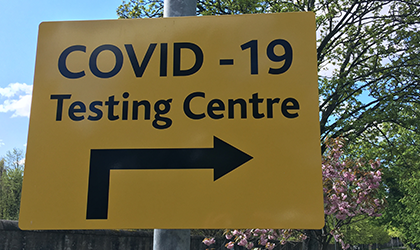
Excess deaths – the number of those dying above the average of the past five years – is a crucial metric for assessing the lethality of Covid-19. It measures the immediate toll, both direct and indirect, that the virus, SARS-CoV-2, has exacted.
In this article, we consider excess deaths in Great Britain in the first 12 weeks of the Covid-19 era and show that the proportion of excess deaths ascribed to Covid-19 varied by registration week, age group and gender. We also consider if there is evidence that Scotland fared better than England and Wales, as the UK lockdown on 23 March 2020 may have been slightly earlier in the exponential growth of the SARS-CoV-2 pandemic in Scotland than for England and Wales.
But, first, we need to highlight some differences between the countries concerning death registration and how the “epidemiological week” is defined.
Death registration and epidemiological week
By law in Scotland, fact-of-death must be registered with National Records of Scotland (NRS) within 8 days of death having been ascertained. By contrast, for coroner-referred deaths in England and Wales, fact-of-death is not registered with the Office for National Statistics (ONS) until the coroner has determined cause-of-death which could be weeks or months later. Hence, delays in the registration of deaths in England and Wales are not constrained to be less than 8 days. Worse, ONS is unaware of those deaths that await coroners’ determination on cause-of-death. Particularly long registration delays apply for deaths which are subject to inquest.1
Even an additional week’s delay in death registration matters when confronted by highly transmissible diseases of age and sex-differentiated lethality. This, of course, includes Covid-19, but also opioid-related deaths over the past 20 years.2,3
Besides differentially late registration of deaths, an additional complication is how the epidemiological week is defined. For example, week 13 for England and Wales ends on 27 March 2020, but for Scotland it ends on 29 March 2020 – two days later and as internationally defined. Two days matter when the doubling time for transmission of SARS-CoV-2 has been estimated at 3.3 days or shorter.
Lethality of Covid-19 disease over 12 weeks
Definitions of Covid-19 death vary: some require confirmatory testing for the presence of SARS-CoV-2 antigen (Great Britain does not). More generally, deaths in which Covid-19 is mentioned (which we will refer to as “Covid-mention deaths”) are determined by clinical acumen when doctors certify cause of death. We do not dispute these attributions but do recognise that such judgements may vary, including by age of the deceased.
Alternatively, and preferably, lethality can be assessed by comparing all-cause mortality in the pandemic era against expected mortality, based on the past 5 years; and by assessing what percentage of the “additional deaths” were ascribed as Covid-mention deaths. These comparisons, by week of death registration (as opposed to week of death occurrence), can also be made by age group and gender.4,5
Hence, between England and Wales (population of 59 million) versus Scotland (population of 5.5 million), we shall compare the pandemic’s evolution by death registration date over 12 weeks for Covid-mention deaths, and for “excess” deaths (that is, deaths registered in addition to those expected on the basis of the past 5 years).
For England and Wales only, we explore the influence of age group and gender on the pandemic’s evolution in terms of “excess deaths” by death registration date over 12 weeks.
By death registration date, irrespective of age
In Table 1, we chart expected deaths, Covid-era deaths, Covid-mention deaths and additional or excess deaths in England and Wales, and Scotland, by death registration date, in three-week groups.
During death registration weeks 11-22, 79% of the 57,847 additional deaths (those above the 5-year expectation) in England and Wales were ascribed as Covid-mention deaths; as were 82% of the 4,796 additional deaths in Scotland; see Figure 1. The percentage attribution as Covid-mention deaths was initially significantly higher in England and Wales than in Scotland: 71% (se 0.3%) versus 67% (se 1.0%) during weeks 11-16; with reversal thereafter to 85% (se 0.2%) versus 96% (se 0.4%).
By 29 and 31 May 2020 respectively, Covid-mention death registrations were 771 per million of population in England and Wales (se 3.6) versus 711 (se 11.4) in Scotland, significantly lower despite Scotland’s more timely death registrations and the two-day difference in epidemiological week.
Table 1: Covid-era deaths in England and Wales by death registration week vs past 5-year expectation.
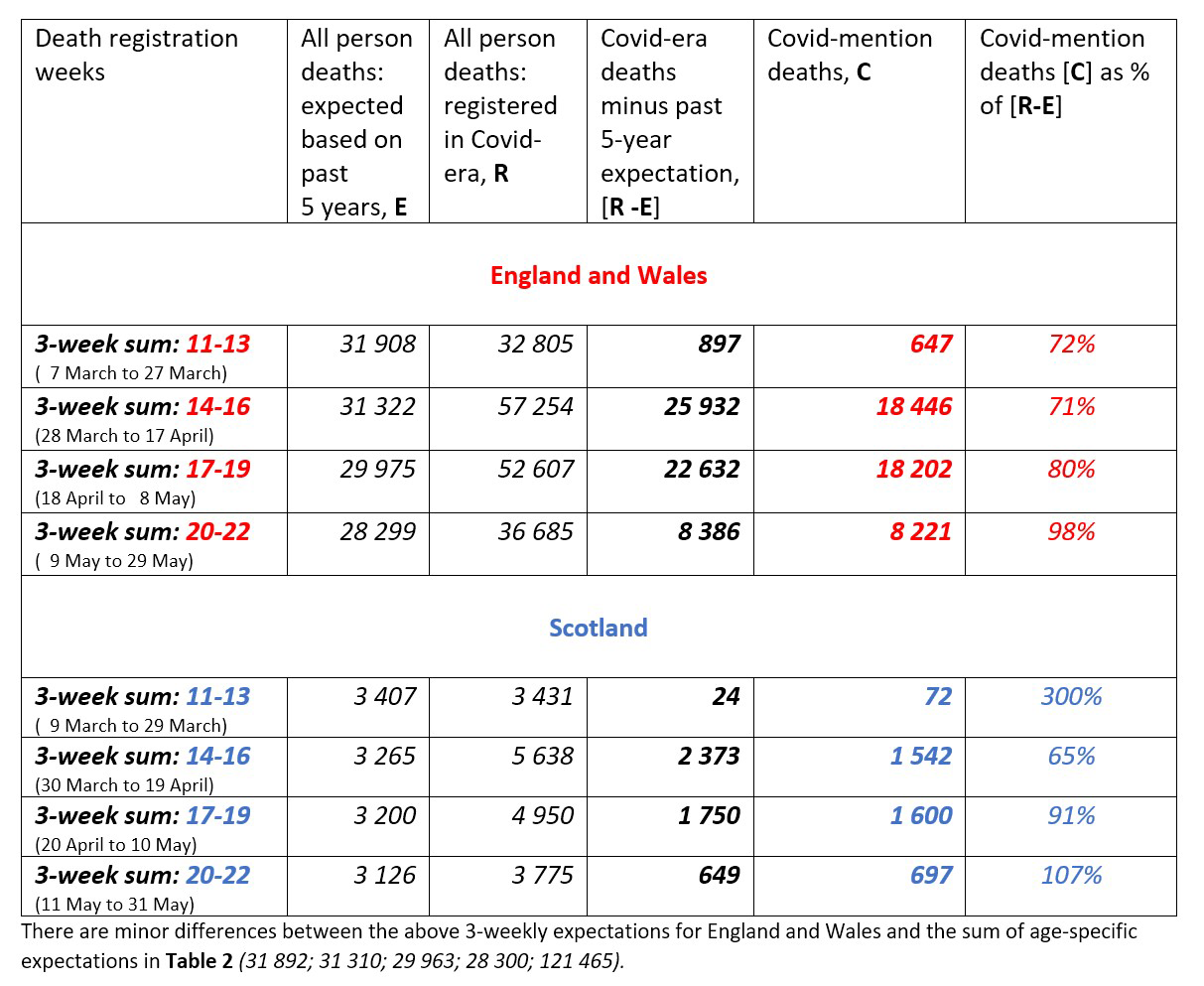
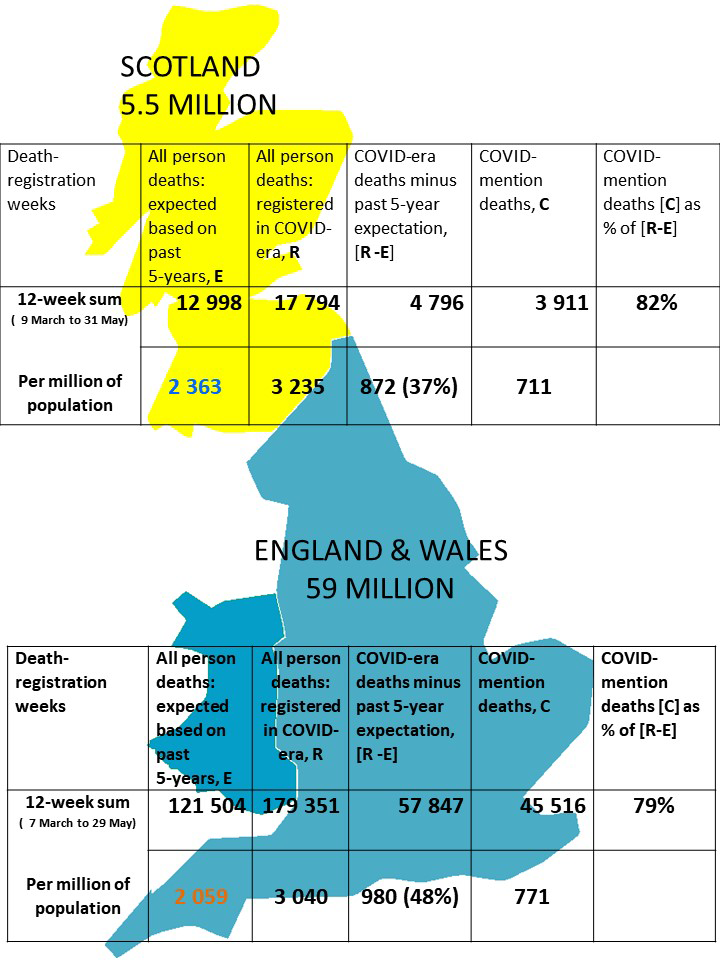
Figure 1: Expected, actual and excess deaths over 12 weeks of the Covid-19 pandemic in Scotland, England and Wales.
The pandemic’s evolution in Scotland has been different by location of death
In Scotland, death registration weeks 14-16 included 529 Covid-mention deaths in care homes versus 826 in hospitals. In registration weeks 17-19, these counts were effectively reversed, with 873 Covid-mention deaths in care homes versus 578 in hospitals. Scotland registered 360 Covid-mention deaths in care homes versus 233 in hospitals during registration weeks 20-22.
In the peak registration weeks for care homes’ Covid-mention deaths (weeks 17-19), registered deaths from all causes in Scotland’s care-homes were expected to be 744 on the basis of the past 5 years, so the 873 Covid-mention deaths must have been hugely distressing – being more than the all-cause expectation; see Figure 2.
By contrast, in peak registration weeks for hospitals’ Covid-mention deaths (weeks 14-16), registered deaths from all causes in Scotland’s hospitals were expected to be 1,647, so the 826 Covid-mention deaths represented about half the hospitals’ all-cause expectation.
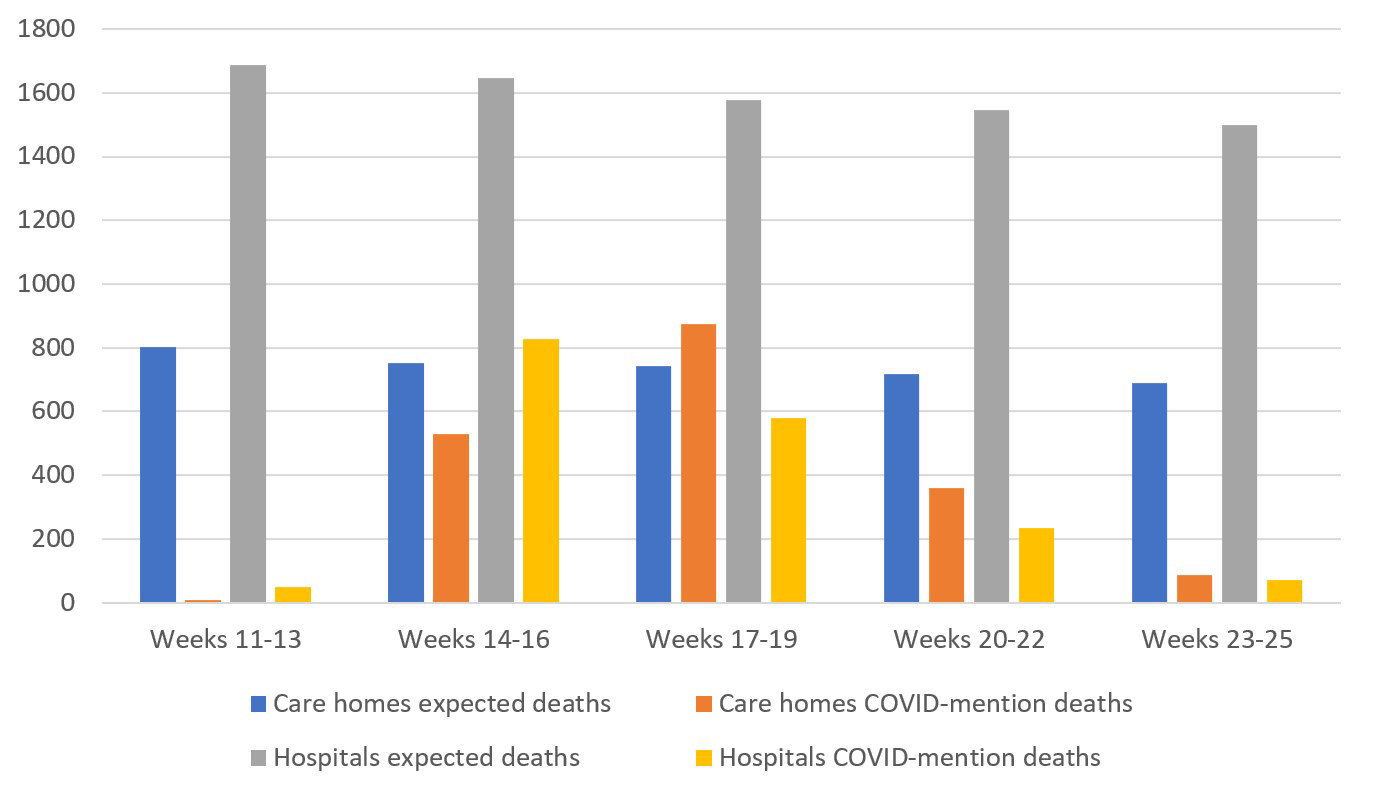
Figure 2: Scotland’s Covid-mention deaths in care homes and hospitals vs all-cause expected deaths (past 5-year basis).
Pandemic evolution by death registration, age group and gender for England and Wales
Differencing between Table 2 (all persons) and Table 3 (males) reveals that males’ “excess deaths” in England and Wales were 51% of their 12-week expected mortality (30,777/59,847) compared to 44% for females (27,109/61,618).
Table 2: Covid-era deaths in England and Wales by death registration week vs past 5-year expectation by age group.
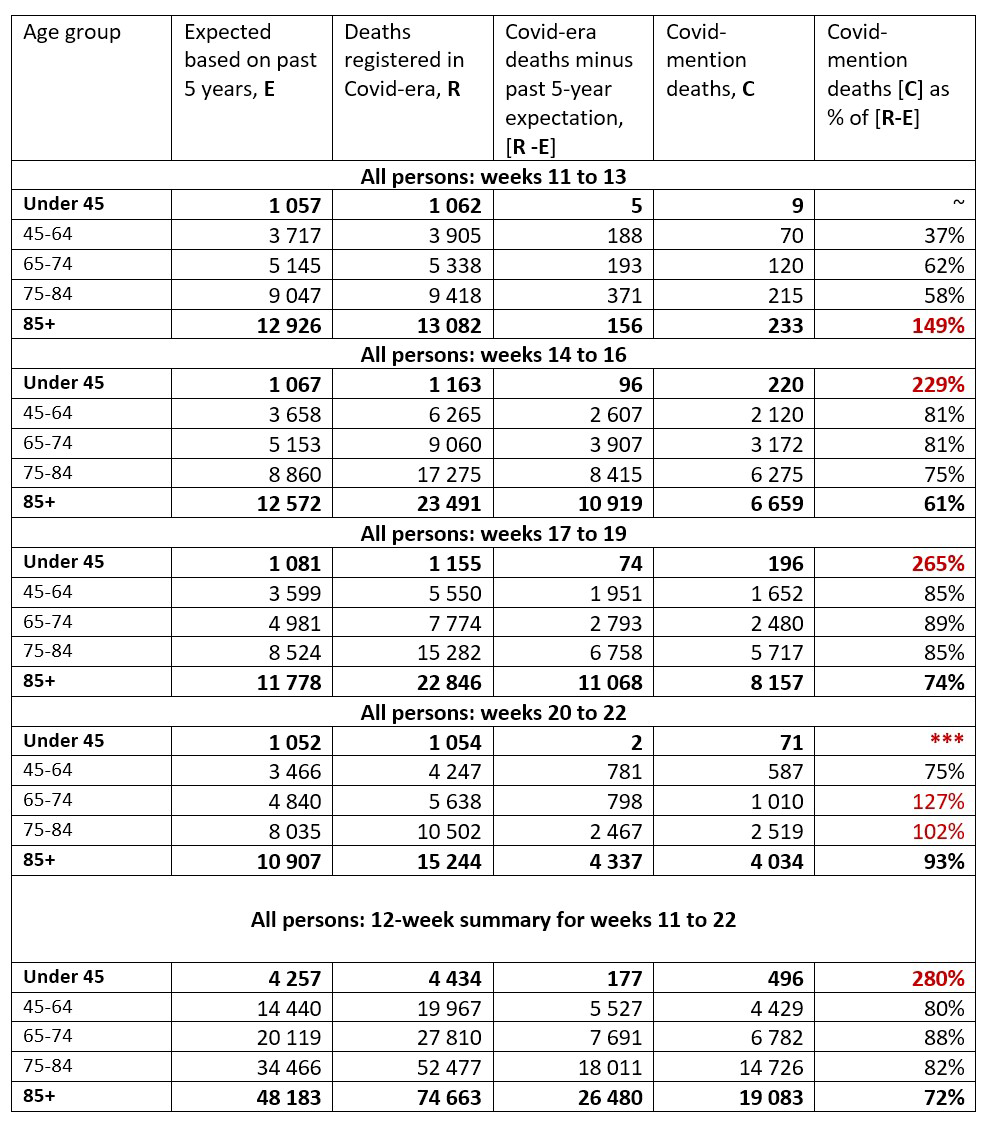
Table 3: Males’ Covid-era deaths in England and Wales by death registration week vs past 5-year expectation by age group.
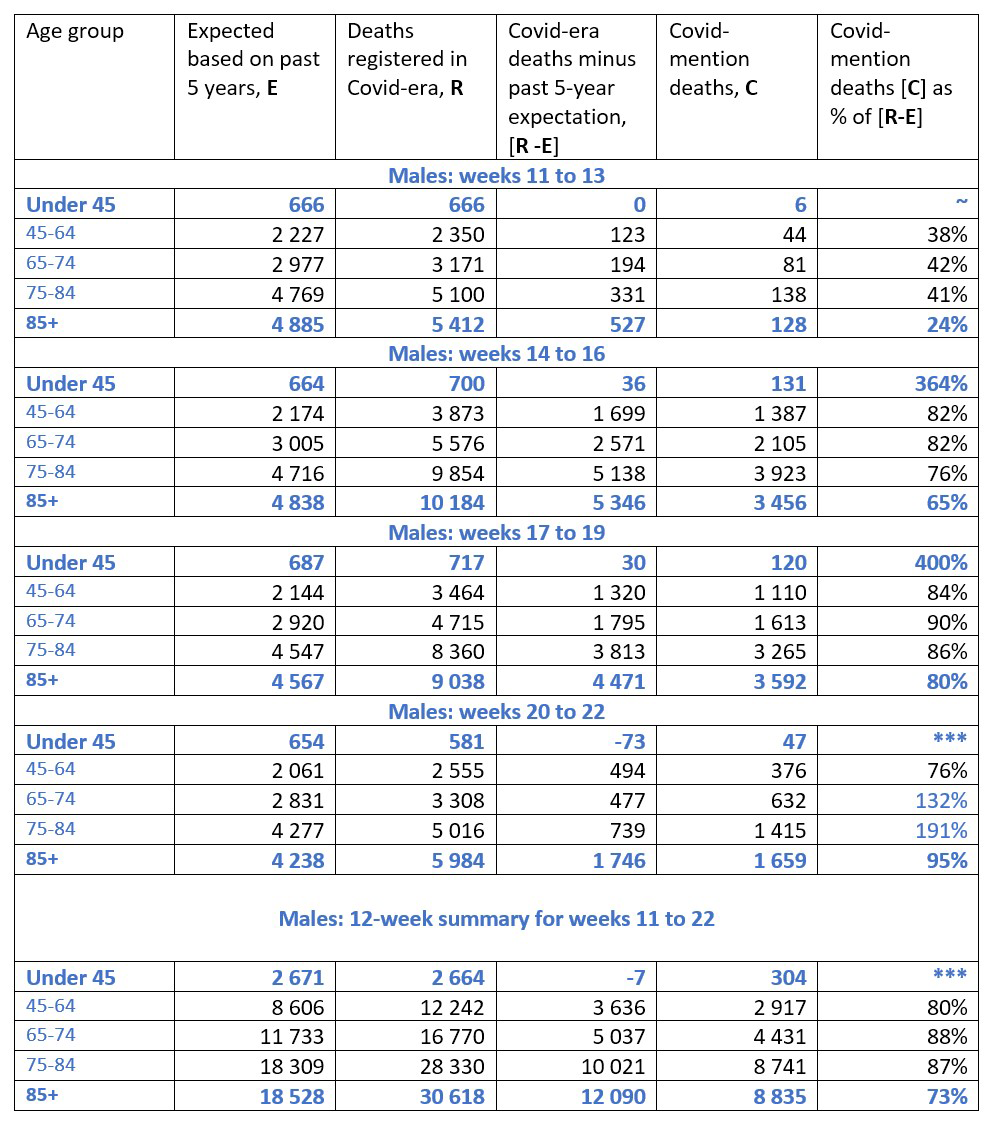
By age group, those aged 75-84 and 85+ years accounted for 74% of all Covid-mention deaths in England and Wales that were registered in weeks 11-22 (33,809/45,516).
The proportion of excess deaths ascribed to Covid-19 was significantly lower at age 85+ years than at younger ages; see Table 2. Both for younger ages and at 85+ years, the ascribed percentages increased from death registration weeks 11-13 through to weeks 20-22.
For example, the proportion of male excess deaths ascribed to Covid-19 at 85+ years increased from 24% in death registration weeks 11-13 (128 of 527 additional deaths) through 65% in registration-weeks 14-16 (3,456 of 5,346 additional deaths) to 80% and 95% respectively by death registration weeks 17-19 and 20-22. For males aged 65-74 years, the equivalent percentages were 42%, 82% and 90% until, in registration weeks 20-22, Covid-mention deaths were 1.3 times as many as the observed “excess deaths”: 632 versus 477.
The extent to which Covid-mention deaths at 85+ years exceeded those at 75-84 years also evolved dramatically by death registration week: having been near equal at 233 : 215 in registration-weeks 11-13, and also at 6,659 : 6,275 in registration-weeks 14-16, the ratio climbed to 8,157 : 5,717 in registration weeks 17-19 (43% more COVID-mention fatalities at 85+ years than at 75-84 years) and still higher to 4,034 : 2,529 in registration weeks 20-22.
The first time that female Covid-mention deaths at 85+ years outnumbered those for their male counterparts was in registration weeks 17-19: males being 3,592/8,157 (44%).
Differencing between Table 2 and Table 3 again, notice that, over 12 registration weeks, females aged 75-84 years and 85+ years experienced 16,233 Covid-mention deaths when their all-cause expectation (based on past 5 years) was 45,812 fatalities, so that the pandemic’s direct toll was 35% of their 12-week expected mortality. Their additional deaths were 22,380 in total, which amounts to 49% of the 12-week expected mortality; see also Figure 3.

Figure 3: England and Wales: 3-week expected all-cause deaths (past 5 years) and excess deaths by gender at ages 45+ years.
For males, all additional deaths at 75-84 years and 85+ years were an even higher percentage of their 12-week expected mortality at 55% (10,021/18,309) and 65% (12,090/18,528) respectively.
Finally, the 12-week summary for males under 45 years of age reveals that their 304 Covid-mention deaths were 11% of their 12-week expected mortality (2,671) and yet “excess deaths” were negative (-7). For each trio of registration weeks (11-13 through to 20-22, when “excess deaths were “-73”), males’ Covid-mention deaths under 45 years of age have greatly exceeded their corresponding tally of additional deaths – so much so that, during the Covid-era, there may have been a substantial reduction in their registered other causes of death. For example, external causes of death may have reduced quite substantially. For females under 45 years of age, additional deaths over 12-weeks numbered 184, mirroring their registered tally of 192 Covid-mention deaths.
Conclusions
Scotland may have fared better than England and Wales but nothing like as well as Denmark, which had only one-sixth of Scotland’s Covid-19 fatalities per million of population.
Across these three UK countries, the proportion of excess deaths ascribed to Covid-19 increased as the pandemic evolved. Peak registration weeks were later for Covid-mention deaths in Scotland’s care homes (17-19) than in hospitals (14-16). In England and Wales, nearly three-quarters of registered Covid-mention deaths registered in weeks 11-22 occurred in persons aged 75-84 years or 85+ years. At age 85+ years, a consistently lower percentage of “excess” deaths was ascribed to Covid-19 than at ages 75-84 years.
For males across all ages in England and Wales, additional deaths in registration-weeks 11-22 were 51% of expected mortality (30.8K/59.8K), significantly higher than for females at 44% (27.1K/61.6K).
For males under 45 years of age, there is intriguing evidence that their mortality from other causes, as registered during pandemic weeks 11-22, may have reduced in England and Wales; and that this 10% or greater reduction was masked by their Covid-mention deaths.
About the authors
Sheila M. Bird is formerly programme leader at the MRC Biostatistics Unit, Cambridge University. She is a member of the Significance editorial board and the Royal Statistical Society’s Covid-19 Task Force. She writes here in a personal capacity.
Bent Nielsen is professor of econometrics in the Department of Economics, University of Oxford.
References
- Bird, S.M. (2013) Editorial: Counting the dead properly and promptly. Journal of the Royal Statistics Society Series A, 176, 815 – 817. ^
- Pierce, M., Bird, S.M., Hickman, M. and Millar, T. (2015) National record-linkage study of mortality for a large cohort of opiate users ascertained by drug treatment or criminal justice sources, 2005-2009. Drug and Alcohol Dependence, 146, 17-23. ^
- Gao, L., Dimitropoulou, P., Robertson, J.R., McTaggart, S., Bennie, M. and Bird, S.M. (2016) Risk-factors for methadone-specific deaths in Scotland’s methadone-prescription clients between 2009 and 2013. Drug and Alcohol Dependence, 167, 214-223. ^
- Office for National Statistics. (2020) Deaths registered weekly in England and Wales, provisional: week ending 12 June 2020 (and previous releases). ons.gov.uk. ^
- National Records of Scotland. (2020) Deaths involving coronavirus (COVID-19) in Scotland, Week 25 (15-21 June 2020); also archive. nrscotland.gov.uk. ^




